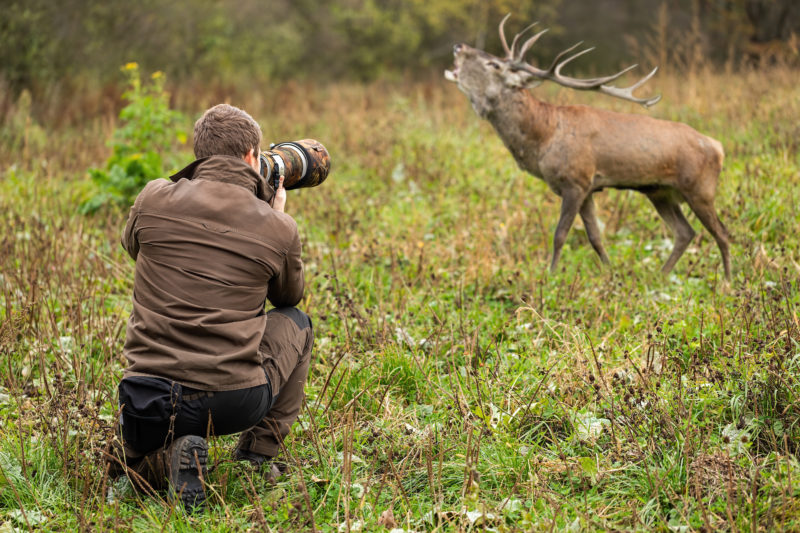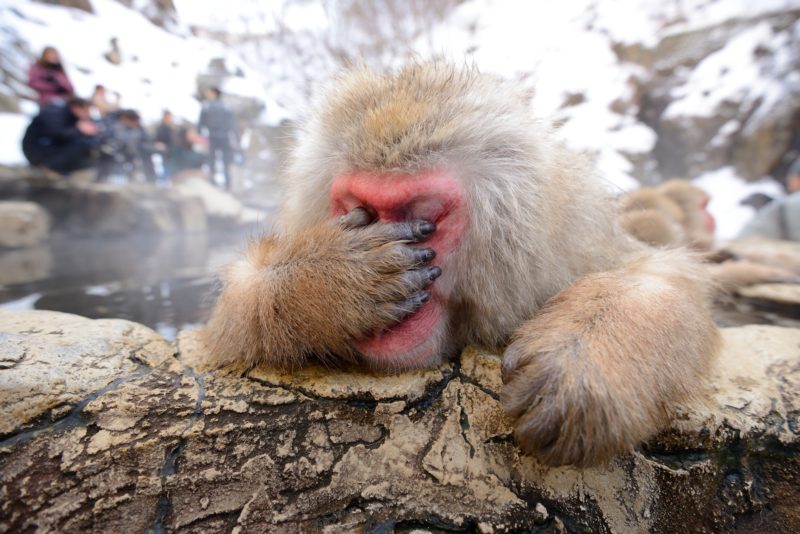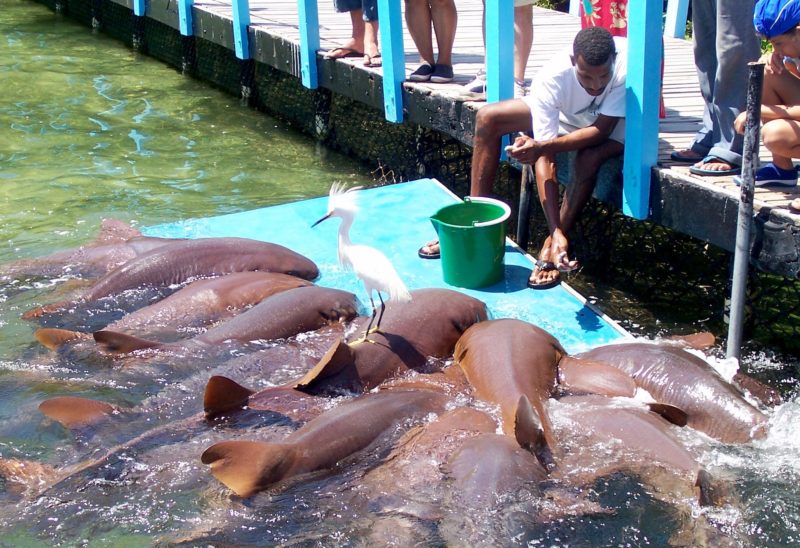WILDLIFE: Take a walk on the wild side
When Traveling for Wildlife Respect is the Best Indicator of Sustainability
How can you combine sustainable travel with wildlife tourism?
For nature and animal lovers, traveling to the far reaches of the globe can be one of the best ways to see the fantastic spectrum of biodiversity our planet has to offer. With alarming rates of environmental change and habitat loss, the pull to glimpse the last lions, tigers, polar bears, and others in the wild can seem irresistible and urgent. Wildlife tourism is a massive industry, drawing people in with the promise of close-up interactions and sensational photo opportunities with the last of these charismatic animals.

Young male wildlife photographer in brown cloths taking pictures of a red deer, cervus elaphus, stag roaring on a green meadow close to him. Tourist with camera recording wild animal.
One could argue that wildlife tourism began with big-game trophy hunting. Men with guns went out into the bush for days on end with the goal of bagging the biggest and most beautiful wild creatures they could find. Today, the industry isn’t guaranteed to treat wildlife much better. Businesses that display animals in shows or for personal interaction with tourists often keep the animals in dismal conditions and drug or abuse them to keep them docile.
Is there a way we can travel that would actually benefit these wild animals and help protect them?
Instead of ogling these animals just to tick them off a bucket list, is there a way we can travel that would actually benefit these wild animals and help protect them? Not all aspects of the wildlife tourism industry have such negative impacts on the animals they claim to be conserving.

african wildlife
Wildlife tourism can be sustainable and beneficial if you know what to look out for. Respect and awareness are the most crucial elements you can bring to the table when planning your trip. Look for tour companies that practice these qualities and note their policy on how they interact with wildlife.
Is the company promising a show or handling the animals?
Wild animals are just that— wild. Wild animals that are held captive and trained to perform are often not able to express their natural behaviors and don’t get to live in their natural habitat. Most wild animals find close contact with humans and life in captivity very stressful and their health suffers for it.

Japanese Snow Monkey
Opportunities to cuddle and make contact with the animals can mislead people into thinking it is ok to approach animals in the wild— a dangerous assumption to make. If you are planning on visiting a sanctuary, check up on their accreditation. Organizations that are managed correctly are able to give wildlife a healthy and normal life while also promoting conservation.
Is the company baiting wildlife with food?
Wild animals are perfectly capable of finding their own food and encouraging the feeding of wild animals acclimates them to human presence, putting them at higher risk of becoming a nuisance or a danger with their boldness.

The bait is usually a high-reward yet unhealthy food, which promotes competition amongst the wildlife and can lead to fighting, aggressive interactions with tourists, and damage to property. Animals that become a nuisance or a safety risk are not often tolerated.
Practical tips
The best wildlife tour companies prioritize respect and awareness. Tours that focus on education and that promote viewing wildlife in their own habitat and at a safe distance are acting in the best interest of the wildlife and those of us traveling to see them.
Stick with companies that honor these ideas, giving wildlife plenty of space and working to keep their clients aware and informed to reduce impact. There are many tour groups online that are dedicated to supporting companies who are true and reputable wildlife advocates. Groups like Responsible Travel, National Geographic, and Intrepid Travel are dedicated to sustainable tourism and can put your mind at ease when thinking about the impacts of your next big wildlife adventure.
Related post :
No listings were found matching your selection.
About
Travel Inspiration and Inside from Positive Travel
